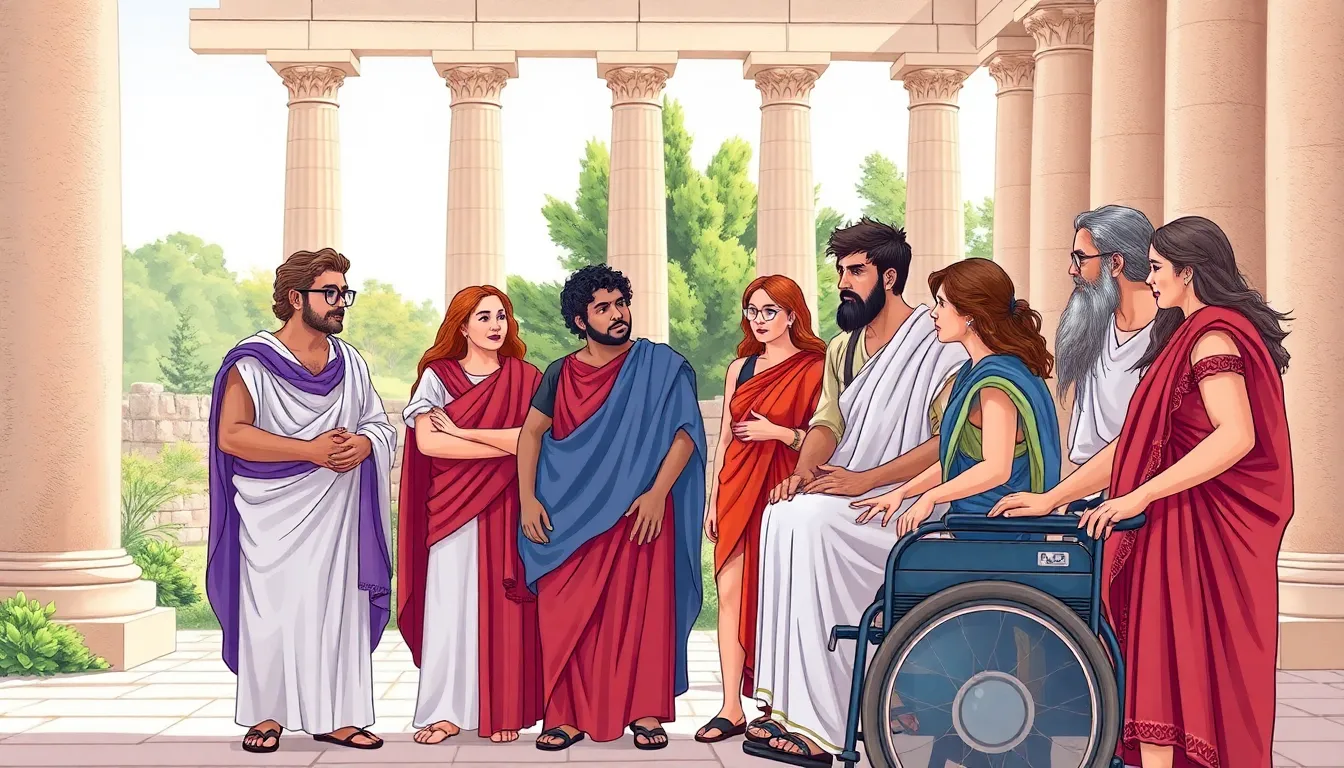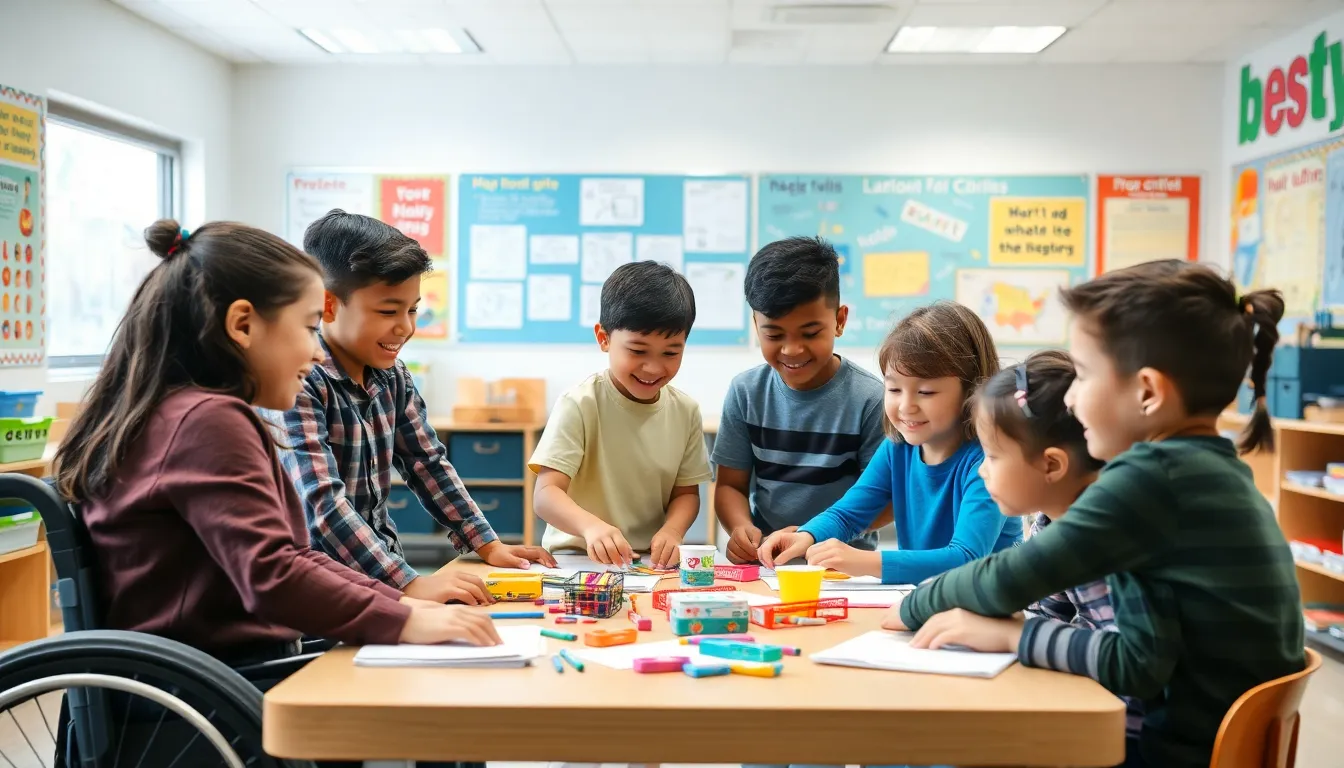Special education has a rich and colorful history that’s often overlooked. Picture a time when children with disabilities were hidden away, their potential stifled by ignorance. Fast forward to today, and you’ll find a world where inclusion is celebrated and tailored education is the norm. It’s a journey filled with milestones, quirky characters, and a few bumps along the way that led to a revolution in how society views learning differences.
History of Special Education
Special education includes tailored instruction designed for students with disabilities. This approach aims to meet unique learning needs through specialized services. Historical perspectives highlight that children with disabilities faced severe exclusion, often receiving little support. The early 20th century saw limited recognition of their rights, leading to restrictive environments that hindered personal growth.
Significant shifts began in the 1960s when advocacy movements emerged. These movements raised awareness, pushing for educational reforms to ensure equitable access. Legislation, such as the Education for All Handicapped Children Act of 1975, mandated free appropriate public education for all children, including those with disabilities. This act marked a pivotal moment, encouraging inclusive practices and supporting specialized education programs.
The 1990s introduced the Individuals with Disabilities Education Act (IDEA), reinforcing earlier legislation and expanding protections. IDEA emphasized individualized education plans (IEPs) for students, ensuring customized support. The law also included provisions for transition services, promoting life skills for students as they prepared for adulthood.
Today, special education encompasses a wide range of services, including speech therapy, occupational therapy, and behavioral intervention. Modern classrooms increasingly integrate students with disabilities, fostering collaboration among educators, families, and related service providers. Prioritizing inclusivity challenges existing norms while enhancing educational outcomes for diverse learners.
Societal changes continue to shape special education, moving towards acceptance and understanding of learning differences. This ongoing evolution reflects a growing commitment to ensuring that every student, regardless of ability, receives a quality education tailored to their needs.
Early Beginnings

The history of special education traces back to ancient civilizations, where early attempts at understanding and accommodating disabilities existed.
Ancient Civilizations
Ancient Greeks and Romans recognized the presence of individuals with disabilities, though their societal roles varied. In ancient Greece, people with disabilities often faced exclusion but were sometimes included in community life. Romans demonstrated contrasting attitudes, occasionally providing care and support for them. Some cultures around the world embraced individuals with disabilities as possessing unique insights or spiritual connections, leading to different levels of inclusion and accommodation. The foundation for special education began with these early awareness efforts, highlighting the need for understanding and support.
Middle Ages
During the Middle Ages, attitudes towards individuals with disabilities shifted dramatically. Many societies viewed disabilities as a sign of divine punishment or moral failing, leading to further marginalization. Institutions emerged, primarily focused on confinement rather than education or rehabilitation. Despite the prevalent stigma, some progressive thinkers advocated for more compassionate approaches, emphasizing the capabilities of individuals with disabilities. These early advocates planted seeds for change, ultimately influencing future perspectives on education and inclusion.
The 19th Century Developments
The 19th century marked crucial progress in special education through reform movements and the establishment of specific institutions. Advocacy groups began to form, pushing for recognition and rights for individuals with disabilities.
Reform Movements
Reform movements during this time aimed to improve conditions for individuals with disabilities. Advocates, such as Dorothea Dix, campaigned for humane treatment and better facilities. Efforts highlighted the need for education tailored to individual needs. School systems began to recognize the importance of specialized strategies to support learning differences. These movements laid the groundwork for future legislation addressing educational rights.
Establishment of Institutions
Institutions emerged throughout the 19th century to provide care and education for individuals with disabilities. The first special schools, such as the Boston School for the Deaf, opened their doors in the early 1800s. Focus shifted from confinement to education, with many institutions emphasizing teaching methods that addressed unique learning styles. These early steps set the foundation for future developments in special education, leading toward more inclusive educational environments.
The 20th Century Progress
The 20th century marked pivotal progress in the field of special education, significantly altering how society perceives and supports students with disabilities.
The Federal Role
Federal involvement began with advocacy for educational reforms designed for children with disabilities. Legislation introduced in the 1940s and 50s aimed at recognizing these students’ rights to educational opportunities. This federal role became increasingly vital, especially in the 1960s when awareness increased around the need for inclusive education. The government established programs to guide states in developing supportive educational frameworks. These developments led to a stronger emphasis on ensuring access to education for all children, regardless of their abilities.
Major Legislation
Major legislation shaped the landscape of special education throughout the 20th century. The Education for All Handicapped Children Act, passed in 1975, mandated free public education for children with disabilities. This law served as a cornerstone for future policies, laying the groundwork for inclusion and support in the classroom. Following this, the Individuals with Disabilities Education Act (IDEA) was enacted in the 1990s, reinforcing the principles set forth by earlier legislation. With IDEA, individualized education plans (IEPs) became standard, ensuring tailored instruction met each student’s unique needs. These laws established a framework for comprehensive support, promoting equitable educational opportunities.
The Modern Era
The modern era of special education emphasizes inclusion and individualized support for students with disabilities. Educational settings now focus on integrating these students into general classrooms, fostering an environment where all can thrive.
Inclusion Practices
Inclusion practices have become a pivotal aspect of modern education. Educators use collaborative teaching strategies that promote cooperation between students with and without disabilities. Co-teaching models, for instance, implement shared classrooms, allowing teachers to differentiate instruction effectively. Research indicates that inclusive settings benefit not only students with disabilities but also their peers, enhancing social skills and empathy. Schools prioritize creating an accepting atmosphere, ensuring that all students feel valued and supported. Training programs provide teachers with strategies to adapt lessons and facilitate peer interactions, promoting a sense of belonging.
Current Trends
Current trends in special education reflect a growing commitment to innovation and tailored instruction. Data-driven decision-making plays a key role in developing effective teaching strategies for diverse learners. Technology integration expands the resources available, enabling personalized learning experiences through adaptive software. Moreover, social-emotional learning has gained traction, addressing the mental health needs of students. Multidisciplinary teams collaborate to design comprehensive support plans, emphasizing the whole child’s development. Legislative advancements continue to enhance rights and protections for students with disabilities, further promoting equal access to education.
Conclusion
The journey of special education reveals a profound transformation in society’s approach to learning differences. From a history marked by exclusion and misunderstanding to today’s commitment to inclusion and personalized support, significant strides have been made. The integration of diverse learners in classrooms fosters not only academic growth but also social development, enriching the educational experience for all students.
As advocacy continues to shape policies and practices, the focus remains on creating equitable opportunities for every child. The evolution of special education underscores a collective responsibility to ensure that all students, regardless of their abilities, receive the quality education they deserve. The future holds promise for further advancements that will enhance learning environments and empower every learner to thrive.





